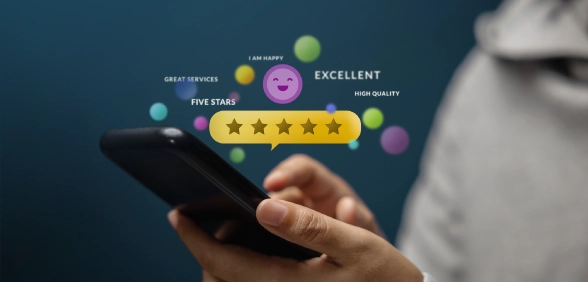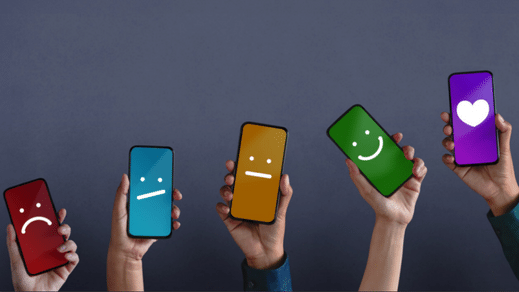Part 1 of 2, this post will list commonly used terms and words in the customer experience world to help you get a handle on all the customer experience jargon.
Business Drivers
These have a major impact on the performance of your business. These can be a resource, process or condition that is vital for the continued success and growth of a business. Business drivers vary from business to business and can be influenced by both internal and external factors.
Some examples include:
- The number of leads that come into the business
- Machine down time
- Number of cash registers open per hour
There can be many key business drivers, so it is important to focus on drivers that are important to your businesses in terms of influencing:
- Growth
- Costs
- Cash-flow
- Customer satisfaction
Big Data
Big data has been a big trend and buzz word for a number of years now, and what this term is referring to are enormous data sets that can be analysed through technology to reveal trends, patterns and associations.
In the customer experience world, we are usually looking at a customer’s behavioural and transactional data in order to understand their motivations. For example, in a customer experience management program, you would want to marry up transactional data with customer feedback data to understand how different variables impact upon a customer’s experience. This is a good way to uncover trends around purchasing behaviour and motivation.
Closed Loop Feedback
Closed loop feedback is the process in which you follow up with customers after they complete a survey or feedback form. This process enables companies to continue the dialogue with a customer, instead of ending it abruptly. An important part of closed loop feedback is the ability and commitment to act on the feedback. Companies that utilise closed loop feedback programs gain more ROI from their customer experience management programs than their competitors through higher employee engagement, improved customer advocacy and loyalty, and strong financial returns.
For further reading read: closed loop feedback 101, and closing the loop is essential in driving customer advocacy, this is why…
Customer Centric (also customer centricity)
This is all about focusing on a customer. Specifically, if a business says that its goal is around customer centricity, what they are saying is that they are dedicated or pursuing the focus of customers at the centre of their operations, philosophy or ideas.
Simply put it is about focusing on the customer.
For further reading read: NPS, customer centricity and employee engagement.
Customer Driven
Often you may hear terms such as “customer driven change” or “customer driven marketing”, this is all about offerings, strategies, and plans that are driven by customer demand, or expectation.
Customer Engagement
Customer engagement is how a company engages with customers and vice versa. It can be an initiative led by either the customer or company and can happen online or offline and can happen simultaneously.
Customer Experience (CX)
This is a very broadly used term, and can have multiple definitions. Here we have gone for how we define customer experience and what it is commonly referred to. Customer experience is the term used to describe the interactions between a customer and a brand/business over the lifetime of the relationship. Interactions in this definition is every point of contact that a customer has with your brand (phone call, purchasing a product) and your product. Also included in this are the perceptions held about your brand/product.
Customer Experience Management (CEM)
Customer Experience Management (CEM) is a process or concept that involves improving an organisation’s relationship with its customers through the management and measurement of customer interactions. Companies who manage customer experience well utilise technology, strategies and resources to improve customer satisfaction and loyalty, which ultimately leads to an increase in revenue. Happy customers = returning customers.
Customer Experience Program
A Customer Experience Program essentially is a program that is run with the aim of improving the customer experience. When we explain a customer experience program to clients we explain it as utilising technology, strategies, and processes to positively affect the customer experience. Furthermore, a good customer experience program will enable you to measure and analyse customer feedback and experiences. An even better program will enable you to take immediate action on that feedback in order to improve the customer experience in real time. This is where having a closed loop feedback system is important.
For further reading read: 5 tips to launching your CX program, and driving business outcomes with your CX program.
Customer Journey
The customer journey is the culmination of all the experiences that your customers go through when interacting with your company or brand. It covers the entire process from the initial need/awareness, to initial contact with your company, all the way through purchasing. It is the entire experience of being a customer.
Customer Journey Mapping
This is the process in which you document or map the customer journey. There are several different models and approaches to customer journey mapping, however in all approaches it is about understanding how a customer interacts with your company or brand, and then identifying the gaps or pain points in order to improve the customer journey.
Data Visualisation
Data visualisation is the presentation of data in a pictorial or graphical way. It enables large data sets to be presented in a way that is easy to visually digest. It enables decision makers to see analytics presented visually so that they can grasp new ideas and identify trends and patterns.
Employee NPS (eNPS)
Employee NPS is an approach to employee engagement that is based on the Net Promoter System. This approach was developed based on the idea that happy, engaged employees ultimately leads to loyal customers, and that the annual employee surveys didn’t meet the needs of most companies. As a result, Net Promoter® practitioners have developed an approach to employee engagement based on the Net Promoter System® itself. They systematically identify and strive to improve forms of employee engagement and workplace characteristics that have the biggest potential impact on customer loyalty.
For further reading read: eNPS by Bain & Co.






